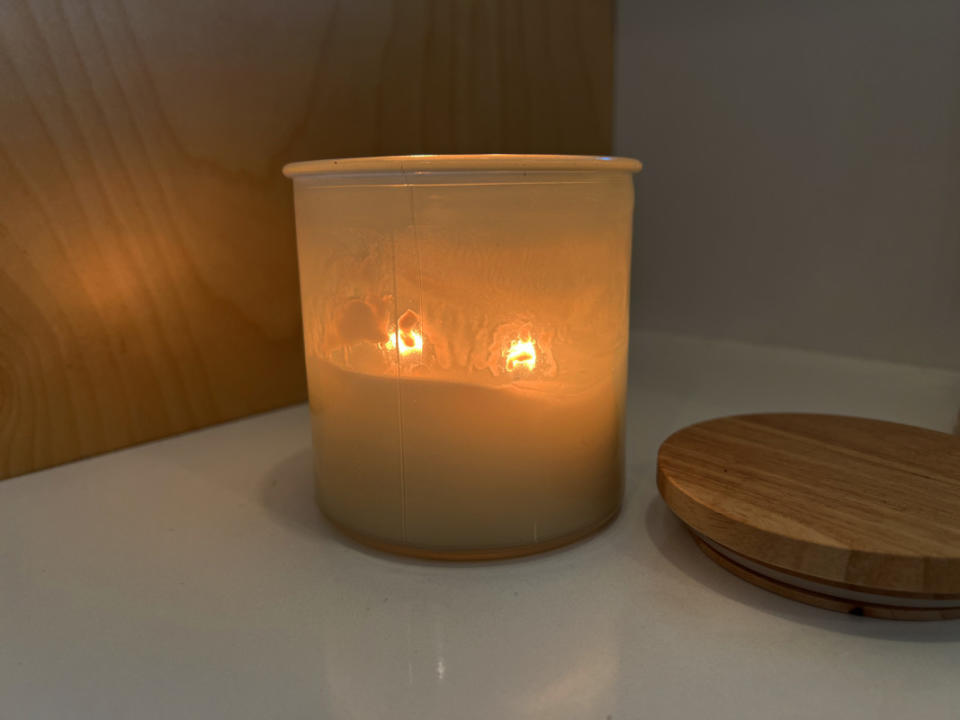The Impact of Candles on Indoor Air Quality
Candles have long been associated with a home's warm, inviting atmosphere. In many cultures, it's a year-round tradition, but during the winter, it's especially hygge. However, candles do come at a cost (and we're not talking Diptyque). The real cost is the effect on indoor air quality (IAQ).
“Candles produce particulate pollution, including soot, and release VOC’s when they burn," shares Andy Fox, Filtration and Indoor Air Quality Specialist at 3M. To maximize air quality, minimize candle use.”
Consider your own space before you light that next candle wick. Explore the potential risks associated with synthetic fragrances, emissions from candles, and the repercussions indoor air pollutants can have on your health.
Synthetic Fragrances and Allergic Reactions
While candles with synthetic fragrances can smell delightful, many fear that they can also introduce harmful chemicals into the air. Some consumers may experience allergic reactions or exacerbated respiratory issues, but in most cases, you're not in danger. "There are no known health hazards associated with scented candles. Scented or unscented, you can rest assured that any well-made and properly burned candle will burn cleanly and safely," shares the National Candle Association.
Emissions from Burning Candles
The act of burning candles itself can release a variety of pollutants into the air, and the risks increase with the level of exposure. While paraffin wax candles and scented candles are deemed safe, lead-core wicks, although less common today, emit airborne lead concentrations into the air when burned.
How Poor IAQ Affects Your Health
Prolonged exposure to poor indoor air quality can lead to a range of health issues. Respiratory problems, eye irritation, headaches, throat irritation, and dizziness are common symptoms associated with inhaling VOCs and other particulate emissions released during candle burning. Individuals with pre-existing respiratory conditions may experience asthma-like symptoms. Those with a risk factor for chronic obstructive pulmonary disease (COPD). Long-term exposure to indoor air pollution has also been linked to more severe health issues, including cardiovascular diseases and certain cancers. Prioritizing clean-burning candles and maintaining proper ventilation can help mitigate these health risks.

Emily Fazio
FAQ
What should you look for in a good candle?
Opting for candles made with natural fragrance compounds like essential oils can be a healthier alternative, providing aromatic pleasure without compromising air quality.
Choose a type of candle made from cleaner-burning materials. Beeswax candles and organic soy candles are your best options.
Opting for cotton or wood wicks can significantly reduce the emission of harmful substances.
Consider LED or flameless candles. Many affordable options offer the ambiance of a real candle without any of the toxic side effects.
Are candles as toxic as secondhand smoke?
While candles can contribute to indoor air pollution, comparing the toxic chemicals in a candle to the toxicity of tobacco smoke is a bit of an oversimplification. Both sources release harmful substances into the air, but the types and concentrations of pollutants differ. Candles emit VOCs and particulate matter, while secondhand smoke contains a complex mix of chemicals, including carcinogens. However, it's crucial to be aware of the potential risks associated with burning candles indoors and take steps to minimize exposure.
What are the safest candles to burn?
To minimize the impact of candles on indoor air quality, opt for high-quality candles made from natural candle materials such as soy wax, beeswax, or vegetable-based wax.
Look for products with cotton or wood wicks, avoiding those with lead or metal cores.
It's also advisable to use candles in a well-ventilated space to reduce exposure to pollutants.
Avoid cheap wax candles.
What are candle warmers?
Candle warmers have begun to change the candle industry. These devices are designed to melt scented wax without the use of an open flame. They're designed to include a heating element or light bulb beneath a dish or plate where the candle is placed. As the wax melts, it releases its fragrance into the surrounding area, providing a safer and flame-free alternative to traditional candles. Get the effect of a candle without the adverse health effects!

